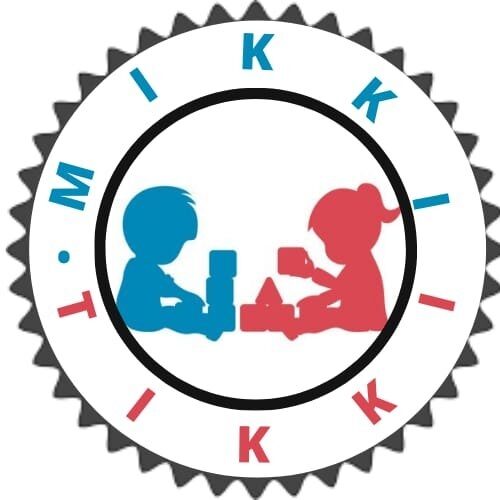When seeking the ideal wooden chess board, the process may seem daunting at first glance. However, by carefully considering the wood type, size, design, quality, and budget, you can narrow down your options effectively. Each element plays a crucial role in enhancing your chess-playing experience, so it’s worth taking the time to make an informed decision. Understanding how each factor contributes to the overall enjoyment and aesthetics of your games will lead you to select a chess board that not only meets but exceeds your expectations.
Wood Type Considerations
When choosing the best wooden chess board, one of the key factors to consider is the type of wood used in its construction. Different types of wood offer unique characteristics that can affect the overall look, feel, and durability of the chess board.
For a classic and elegant appearance, you may opt for a chess board made from rosewood or ebony. Rosewood is known for its rich, dark tones, while ebony offers a striking contrast with its deep black color.
If you prefer a lighter and more natural look, maple or pine wood chess boards could be the perfect choice. Maple wood provides a smooth and light-colored surface, while pine offers a warm and rustic charm.
Additionally, sheesham wood is a popular choice for its durability and affordability, making it a practical option for everyday use.
Consider the aesthetic appeal, durability, and budget constraints when selecting the type of wood for your chess board to ensure it complements your chess pieces and enhances your playing experience.
Size and Shape Selection
Occasionally, chess enthusiasts overlook the significance of size and shape when selecting a wooden chess board. Choosing the right size is crucial for comfortable gameplay. A board that’s too small may make it challenging to move pieces smoothly, while a board that’s too large might take up excessive space. Consider the dimensions of the playing surface and the squares to ensure they align with your playing style and the size of the chess pieces you prefer.
Additionally, the shape of the chessboard can impact both aesthetics and practicality. Traditional square boards are classic and widely used, but round boards or boards with unique geometric designs can add a touch of individuality to your chess setup. Think about the space where you plan to place the board and how different shapes may complement or clash with the surroundings.
Ultimately, the size and shape of a wooden chess board are essential factors that contribute to your overall gaming experience. Take the time to evaluate these aspects to find a board that suits your preferences and enhances your enjoyment of the game.
Design and Aesthetics Evaluation
Moving on from considering the size and shape of a wooden chess board, let’s now focus on the aspect of design and aesthetics evaluation.
When choosing a wooden chess board, pay attention to the design elements that appeal to you. Some boards feature intricate inlays or carvings that add a touch of elegance and sophistication. Others may have a simpler, more modern design that suits a minimalist aesthetic.
Consider the color and type of wood used in the board – darker woods like ebony can create a classic look, while lighter woods like maple offer a more contemporary feel. Additionally, examine the overall craftsmanship of the board to ensure that it’s well-made and durable.
Remember that the design of your chess board can greatly enhance your playing experience and add a decorative touch to your space. So, take your time to explore different designs and choose one that resonates with your personal style and preferences.
Quality and Craftsmanship Assessment
Assessing the quality and craftsmanship of a wooden chess board is crucial to ensure a satisfying playing experience. When evaluating quality, look for solid construction with no loose joints or rough edges. A well-made board should have a smooth and even surface, allowing pieces to move effortlessly.
Craftsmanship is reflected in the attention to detail, such as intricate inlays or carvings that showcase the skill of the artisans.
Inspect the wood used in the board – high-quality woods like ebony, rosewood, or maple indicate durability and a luxurious feel. Pay attention to the finish as well; a well-applied finish not only enhances the aesthetics but also protects the wood from wear and tear over time. Checking for consistent coloring and grain patterns can also indicate a well-crafted board.
Budget and Value Analysis
When considering a wooden chess board, it’s essential to carefully evaluate your budget and analyze the value you seek from your investment. Setting a budget range can help you narrow down options and focus on boards that not only fit your financial constraints but also provide the quality you desire. Remember that a higher price doesn’t always guarantee the best quality, so it’s crucial to balance cost with craftsmanship.
To assess the value of a wooden chess board, consider factors such as the type of wood used, craftsmanship, durability, and aesthetic appeal. Look for boards that offer a good balance between price and quality, ensuring that you get the most out of your investment. Reading reviews and seeking recommendations can also provide insights into the value offered by different chess boards.
Ultimately, finding the best wooden chess board for you involves finding the right balance between your budget and the value you place on factors like craftsmanship and durability. By carefully considering these aspects, you can make an informed decision that satisfies both your preferences and your wallet.
Conclusion
In conclusion, choosing the best wooden chess board involves considering wood type, size, design, quality, and budget. Select a wood type that suits your preferences and budget, ensure the size and shape are comfortable for gameplay, evaluate the design elements that appeal to you, assess the craftsmanship for quality, and balance your budget with the value of the chessboard. By taking these factors into account, you can make the best choice for your playing experience.
